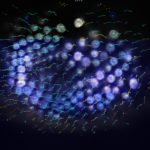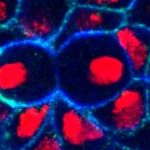Link to Pubmed [PMID] – 35789212
Link to DOI – 10.1371/journal.pcbi.1010211
PLoS Comput Biol 2022 07; 18(7): e1010211
Tridimensional microscopy and algorithms for automated segmentation and tracing are revolutionizing neuroscience through the generation of growing libraries of neuron reconstructions. Innovative computational methods are needed to analyze these neuronal traces. In particular, means to characterize the geometric properties of traced neurites along their trajectory have been lacking. Here, we propose a local tridimensional (3D) scale metric derived from differential geometry, measuring for each point of a curve the characteristic length where it is fully 3D as opposed to being embedded in a 2D plane or 1D line. The larger this metric is and the more complex the local 3D loops and turns of the curve are. Available through the GeNePy3D open-source Python quantitative geometry library (https://genepy3d.gitlab.io), this approach termed nAdder offers new means of describing and comparing axonal and dendritic arbors. We validate this metric on simulated and real traces. By reanalysing a published zebrafish larva whole brain dataset, we show its ability to characterize different population of commissural axons, distinguish afferent connections to a target region and differentiate portions of axons and dendrites according to their behavior, shedding new light on the stereotypical nature of neurites’ local geometry.


